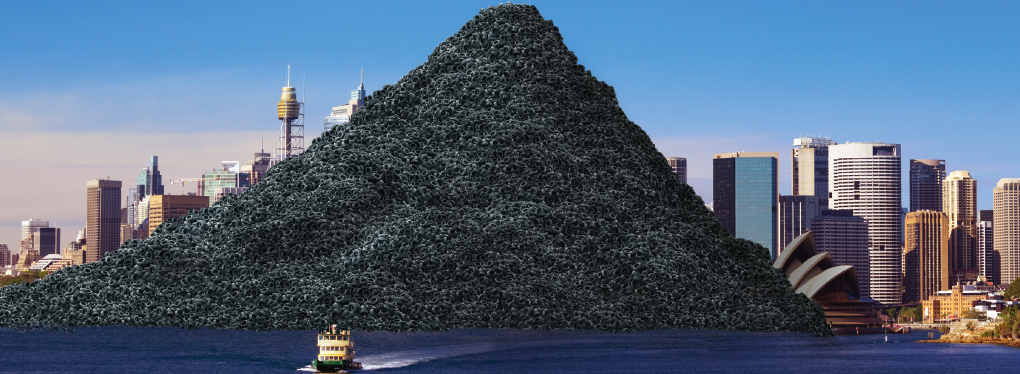Tyre Stewardship Australia celebrates its second full year of operations in January, with many achievements to look back on and goals to look forward to.
As one of the country’s first product stewardship schemes, Tyre Stewardship Australia (TSA) is a test bed and standard bearer for the benefits of product stewardship for responsible management and recycling of ‘waste’ materials.
TSA was officially launched by then Federal Environment Minister Greg Hunt on 20 January 2014. In securing ACCC authorisation for a 25-cent levy on tyres imported into Australia by voluntary members of the scheme, it was established to promote the increase in environmentally sustainable collection, recycling and new markets for end-of- life tyres (ELTs).
In under three years, TSA has gone from nothing to building a growing, positive reputation across the extended tyre manufacture, retail and recycling sector, as well as the wider waste management industry and with other stakeholders.
A small operations team has overseen a development phase in which most major tyre brands and tyre retailers have joined the scheme, with more than 1,100 retail outlets accredited. Moreover, national organisations with extensive vehicle fleets have signed up, putting pressure on their tyre suppliers to do the right thing environmentally.
Liam O’Keefe, who joined TSA as Market Development Manager in September 2015, says the progress was steady initially but has ramped up over the past year.
“When TSA launched, it was still an embryonic idea involving a cross-section of industry that state and federal governments had backed, and a few manufacturers had jumped on board,” he says.
Although the terms had been agreed, in the start-up period many of the major tyre brands, retail chains and leading volume fleet users had not committed. So the first year was mainly focused on getting the industry to accept the idea.
“The breakthrough came when a couple of big retail chains came on board,” Liam says, Tyrepower being the first big name to commit in August 2014.
Support for TSA then stretched into business and government organisations. In 2014/15, the NSW and Victorian Governments made changes to their vehicle purchasing policy to favour procurement from TSA-accredited tyre retailers. Australia Post, with its 13,000- strong fleet, signed up in February 2015, followed by the Department of Defence in August 2015. This high-level support placed procurement pressure on their suppliers to improve environmental standards for disposal of ELTs.
“This demonstrated to those who hadn’t seen its value that it would be better to be part of it than not,” says Liam. “This broke down barriers and businesses started to get on board.”
The first 12 months also involved devising and implementing a viable accreditation process.
“Accreditation ensures surety of supply of ELTs to the recyclers, so they get a good base for the price and the tyres aren’t leaking out to unscrupulous operators who dump them,” Liam explains. “The market development work is about creating demand for the recyclers’ products.”
Each accredited organisation is required to report on certain information based on the nature of their business and position on the tyre supply to end-of-life chain.
Over the past two years, TSA has put in place the necessary infrastructure, including online application and reporting portals, to allow members to sign up easily. This was followed by work on the auditing process and roll-out to ensure accredited members are doing the right thing.
“The TSA’s objective was to make reporting as simple as possible while still gaining useful information. Our objective was for a retailer this shouldn’t take more than five or six minutes a month,” says Liam.
TSA has also developed a robust policy and applied the highest standards around data security. This was after manufactures and retailers expressed concerns about the commercial sensitivity of their data, as it is possible to correlate numbers of waste tyres to how many they are selling.
“We have to marry up the supply chain with numbers of ELTs recycled, but this challenges the usual protocols around the disclosure of information,” Liam explains. “Our data security structures have reassured participants and ensure that they are happy to co-operate.”
To continue reading this article, please see page 32 of Issue 9.



